Time: September 2, 2019 — September 4, 2019
Registration Deadline: August 2, 2019
Location: Room 77201, Jingchunyuan 78, BICMR
This is a joint workshop between Peking University and KU Leuven. The workshop focuses on the topology and birational geometry of algebraic varieties and related topics.


 List of Speakers
List of Speakers Organizing Committee
Organizing Committee Accommodation and Travel Information
Accommodation and Travel InformationBICMR will accommodate all speakers in “Zhong Guan Xin Yuan” Hotel. The hotel is across the street of Peking University Campus, about 10-15 minutes’ walk to BICMR. If you plan to have an extended stay, please inform Ms. Meng Yu (yumeng@math.pku.edu.cn) so that we can make proper arrangements.
Other participants are responsible for arranging and paying for their own reservations for hotel accommodations and travel expenses. If anyone needs help, please contact Ms. Meng Yu.
Some nearby hotels are avaible here: http://bicmr.pku.edu.cn/content/page/9.html
Hotel Address: “Zhong Guan Xin Yuan” Hotel (Zhongguanyuan Global Village)
No. 216 Zhongguancun North Road, Haidian District, Beijing 100871, China
Tel: + (86 10) 62752288
Fax: + (86 10) 62752236
 Contact
ContactMailing address:
Ms. Meng Yu
Room 78105E, Jingchunyuan 78, BICMR, Peking University, Beijing, China 100871
Phone: +86 10 62744121
E-mail: yumeng@math.pku.edu.cn
 Tips
TipsIf you still wish to register after the deadline, please send the following information to Ms. Meng Yu through email:
Name:
Gender:
Affiliation:
Title:
Arrival time:
Departure time:
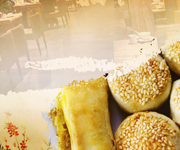
Food
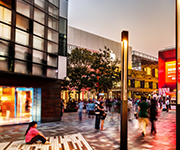
Shopping

Visit
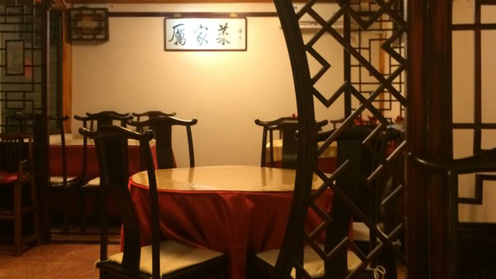
Address: No.11, Yangfang hutong, Denei Dajie
Located in a courtyard of Yangfang hutong in Beijing, there is a special restaurant named Li Jia Cai Restaurant (Li Family Restaurant) which is devoted to Imperial Court food. The initiator of Li Jia Cai is Li Shanlin, a retired professor of mathematics, who also has great interest in cooking genuine Beijing Imperial Court Food.
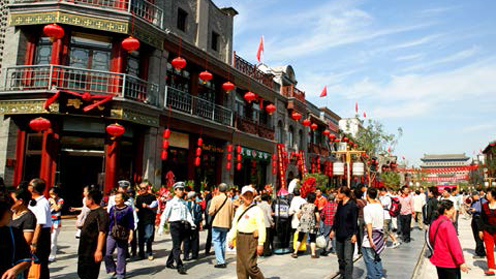
This 700-year-old commercial street is 810 meters (0.5 miles) long and 40 meters (43.7 yards) wide. It is the busiest street in Beijing and there are 600,000 people every day come and go in the street and on holidays, the number can rise to 1,200,000.The first famous business zone in Beijing houses a wide variety of shops and boutiques where you find commodities, some of which are of world-famous brands.
Average Cost per Person: CNY200 - CNY800
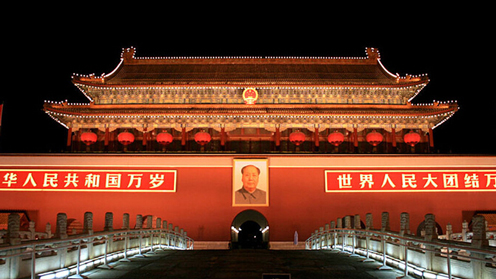
The world’s largest public square, Tiananmen Square (subway line 1, Tiananmen Xi, Tiananmen Dong or Qianmen, ..../ ..../ ..) is a vast desert of paving stones at the heart of Beijing and a poignant epitaph to China’s hapless democracy movement. It may be a grandiose, Maoist tourist trap, but there’s more than enough space to stretch your legs and the view can be breathtaking,
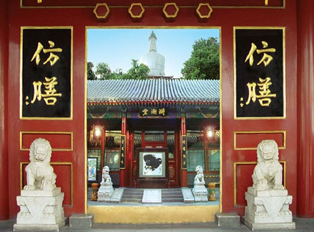
Chinese name: .....f.ng shàn fàn zhu.ng.
Located in Beihai Park, Fangshan Restaurant is the most famous one offering the luxurious Imperial Court Cuisine. The restaurant was opened in 1925 by imperial chefs of the former Qing Dynasty (1644-1911) and caused a great sensation at that time. Fangshan means ‘imitate the imperial court cuisine" in Chinese. The restaurant is made up of three parts and it can hold 500 people eating at the same time. It is decorated in imperial style with the design of dragon and phoenix. Here is the best place to experience the life of the Chinese emperors in former days. Now, it serves nearly 800 kinds of Imperial Court Dishes. Among them, Man-Han Banquet is the most famous.
Average cost per person: CNY200 - CNY300
Hours: 11:00-13:30 17:00-19:30
Location: No.1, Wenjin Jie, inside Beihai Park
Bus Route: 5, 13, 101, 103, 109, 810 (get off at Beihai Stop)
Chinese name: .....yù shàn fàn diàn.
The layout of the restaurant follows the imperial palace with luxurious decoration. When eating in the restaurant, diners are served by waitresses in traditional imperial costumes. Average cost per person: CNY80 - CNY120
Hours: 16:30 - 19:30
Location: No.87, Tiantan Lu, Chongwen District
Bus Route: 34, 35, 36, 106, 6 (get off at Tiantan North Gate Stop)
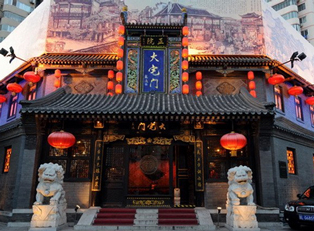
Chinese name: ...
The dishes and snacks cooked in this restaruant are worthy to have a try. And, the traditional performances at night is one of the restaurant"s highlights.
Average Cost per Person: CNY 120-CNY200
Location of Chaoyang Branch: 3 Building, Huixinbei Li, Chaoyang District
Location of Shouti Branch: 20A, Shouti Nan Lu, Haidian District
Location of Changping Branch: 23, Fuxue Lu, Changping District
Chinese name: ......huì zh.n lóu fàn zhu.ng.
Hours: 11:00 - 14:30 17:00 - 22:00
Location: No.8, Beichen Road (East)
Chinese name: ....lì ji. cài.
Address: No.11, Yangfang hutong, Denei Dajie
Located in a courtyard of Yangfang hutong in Beijing, there is a special restaurant named Li Jia Cai Restaurant (Li Family Restaurant) which is devoted to Imperial Court food. The initiator of Li Jia Cai is Li Shanlin, a retired professor of mathematics, who also has great interest in cooking genuine Beijing Imperial Court Food. The restaurant has no employees. The Li family are owner and employees of the restaurant; and dinner is by set menu. That is to say, a guest can not order the dishes but must wait for whatever they serve; furthermore, one banquet daily, if you want to have a dinner here, you should make a reservation (at least two weeks ahead of time); finally there are no chemical materials in the dishes, all flavorings are natural. This restaurant has welcomed many celebrities including the former U.S. president Bill Clinton, Bill Gates, the former premier of Britain, John Major, and Chinese superstar Jackie Chan. Professor Li speaks English and can discuss Chinese culture while you enjoy your dinner and good wine. If you are a real gourmand, try to find this restaurant hidden in a Beijing hutong.
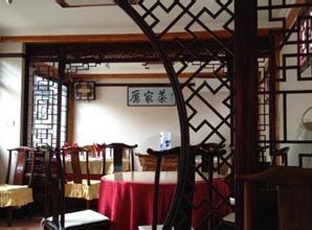
Chinese name: .......yàn yì shàn zh.i j.u ji..
The restaurant is located in a compound courtyard that was the residence of a princess in the Qing Dynasty (1644-1911). So the courtyard is commonly called Gege Fu (Princess Mansion House). It offers the best dishes of imperial cuisine and imperial stew is the special dish there. Comparing with other imperial restaurants, Yan Yi Shan Zhai Restaurant is a perfect combination of imperial cuisine and Sichuan hotpot. Diners put vegetables and meat into the soup, similar to creating the hotpot of Sichuan Cuisine.
Hours: 11:00 - 14:00 17:00 - 22:00
Location: No.9, Daqudeng Hutong, Backstreet of Art Gallery, Dongcheng District
Chinese name: .....guó yáo xi.o j..
Average Cost per Person: CNY50 - CNY200
Hours: 09:00 - 22:00
Location: 58, Jiaodaokou Bei Santiao, Dongcheng District
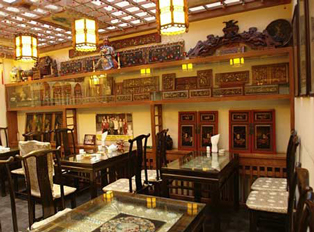

Chinese name: ....t.ng lí gu.n.
The table delicacies in Ting Li Guan Restaurant absorb the essence of the Eight Cuisines in China and combine the Han Cuisine with the other cuisines of minority groups such as Man, Mongol and Hui.
Average cost per person: CNY70 - CNY200
Hours: 11:00 - 14:00 16:30 - 19:00 (Make your dinner reservations at least an hour before your dinner time.)
Location: at the south of Wanshou Hill, inside the Summer Palace
Bus Route: 332, 374, 716, 817 (get off at Xin Jianguomen Stop)
Chinese name: ....
Located in the charming Changpuhe Park, both of the food and service of this restaurant are so good. You could also enjoy some marvelous performances in this large courtyard.
Average Cost per Person: CNY 500-CNY 1000
Location: inside Changpuhe Park, Nanchizi Dajie, Dongcheng District
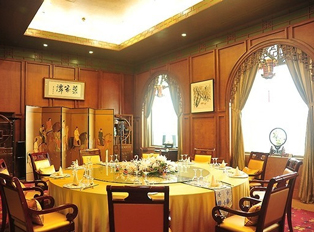
Chinese name: ....tán ji. cài.
Average Cost per Person: CNY200 - CNY800
Hours: 11:30 - 14:00 17:30 - 21:30
Location: 7/F, Unit C, Beijing Hotel, 33, Dong Changan Jie, Dongcheng District
Bus Route: 1, 4, 10, 52, 103 (get off at Wangfujing Stop)
Chinese name: ....h.i tang j..
Average Cost per Person: CNY100 - CNY300
Hours: 10:00 - 22:00
Location: 32, West Street, Xuanwumen, Xuanwu District
Chinese name: ......tài shàng g.ng j.u lóu.
Hours: 11:00 - 14:30 17:00 - 22:00
Location: No.15, Anding Road, Chaoyang District
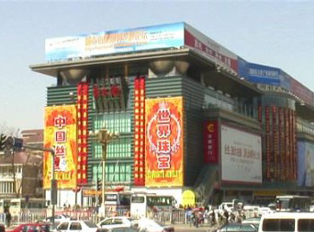
Silk Street accommodates over 1,000 retail vendors in the market. It is the one of the symbols in Beijing together with the Great Wall, Summer Palace, and roast duck. Replacing the old Xiushui Market, the current Silk Street was open on March 19, 2005. The new Silk Street has enlarged its scale of business, adding traditional Chinese handicrafts, antiques, calligraphy, carpets, paintings, hand-knit dresses, toys, trinkets, and fine jewelry. Reputable establishments such as the Tongrentang Pharmacy, Quanjude Peking Roast Duck restaurant, and multi-national coffee and restaurant chains such as Lavazza, SPR Coffee, Subway have their shops there.
Bus Route: 1, 4, 9, 28, 37, 43, 120, 126, 205, 639, 640, 668, 673, 728, 729, 802, 810 (get off at Yonganli Stop)
Subway: Line 1 (get off at Yonganli Stop)
Opening hour: 9:30 ~ 21:00
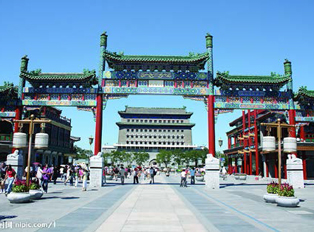
Qianmen Street is one of the oldest and most famous commercial streets with a 500 year old history. As an ancient street in Beijing, it is an assembly place of time honored shops, including Quanjude Roast Duck Restaurant and Du Yi Chu Shao Mai. Now, this street is under reconstruction. It is predicted that the whole project will be finished at the end of this year. But don"t be disappointed: most of the time honored shops will be back in this street by then. Visitors will also be surprised to find that the street will be re-built as it was in the 1920s, when it was extremely prosperous. Furthermore, trolley cars will re-appear in the street, after being absent for 40 years. Visitors can get on the car and view the street for free.
Bus Route: 5, 17, 20, 22, 48, 59, 66, 120, 126, 203, 301, 646, 723, 726, 729, 744, 803, 819, 826 (get off at Qianmen Stop)
Subway: Line 2 (get off at Qianmen Stop)
Starting from Dongdan in the south to Dongsi in the north, Silver Street is a modern street for beauty lovers. It is a gathering placefor exotic fashions. Liz Jane Shopping Center, Longfu Plaza and plentyof franchised stores can offer you all the famous brand names, such as Puma, Liz & Jane, Adidas and Girddar.
Bus Route: 1, 4, 10, 20, 25, 37, 39, 41, 52, 106, 111, 116, 684, 685, 728, 802, 814 (get off at Dongdan Stop)
Subway: Line 1, Line 5 (get off at Dongdan Stop)
It is a well known market dealing with pearls around the world.More than 1,000,000 visitors come to Hongqiao Market to buy pearls yearly. Eventhe former British Prime Minister Margaret Thatcher has been to Hongqiao Marketthree times as she was very impressed with the beautiful pearls. Apart from pearls,the market also offers seafood, digital products and silk.
Location: No.46, Tiantan Dong Lu, Chongwen District
Bus Route: 6, 34, 35, 36, 39, 41, 43, 60, 106, 116, 723, 743, 821 (get off atFahuasi Stop)
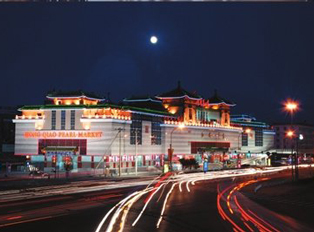
This 700-year-old commercial street is 810 meters (0.5 miles) long and 40 meters (43.7 yards) wide. It is the busiest street in Beijing and there are 600,000 people every day come and go in the street and on holidays, the number can rise to 1,200,000. The first famous business zone in Beijing houses a wide variety of shops and boutiques where you find commodities, some of which are of world-famous brands. Apart from that, there are also many time honored stores with traditional commodities standing in the street for hundreds of years. Nowadays Wangfujing Street is a modern commercial street which is said to be the sister street of the Champs-Elysees in Paris.
Bus Route: 10, 20, 37, 41, 59, 120, 126, 203, 205, 420, 802 (get off at Wangfujing Stop)
Subway: Line 1 (get off at Wangfujing Stop)
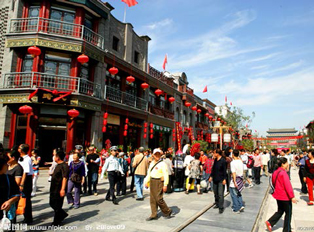
Operation of the street covers clothing, general merchandise and shoes and hats, and mainly includes items imported from Guangzhou, South Korea, Hong Kong and Taiwan, as well as other international fare. Especially the clothes in South Korean and Japanese style are very popular in Women Street. It is believed to be the place that you can find anything you might want.
Bus Route: 405, 416, 421, 659, 942 (get off at Maizidian Xijie Stop)
Located in Xicheng District, Xin Jie Kou is a street crowded with stores selling digital products, including TV sets, tape recorders, cameras and video recorders. Comparing with other commercial streets, you can buy the one you like at the best price. Except for that, the little shops offering clothes in unique style are welcomed by the locals. Recently, many modern emporiums tower in the street, making Xin Jie Kou more prosperous.
Bus Route: 105, 111, 22, 38, 47, 709, 726, 806, 808, 826 (get off at Xin Jie Kou Stop)

Xidan Commercial Street consists mainly of food markets, clothes stores and commodities. The street is an international, modern, commercial combination of shopping, dining, recreation and culture. The center part of the commercial street is an entertainment square. There are a great variety of activity places prepared for you underground from the square, including a cinema, bowling alley, swimming pool and even an indoor rock climbing wall. There are also many modern buildings like the Xidan Department Store, the Xidan Shopping Center and the Chung You Department Store which can offer you middle and high class fashions, cosmetics and other goods. You can find many special counters for well known, world-wide brand names, such as Dior, LV, Chanel and Gucci. They will certainly dazzle your eyes. There are many entertainment places along the street, such as the Beijing Concert Hall and the Capital Cinema.
Bus Route: 1, 4, 10, 15, 22, 37, 47, 52, 102, 105, 109, 603, 604, 726, 728, 808, 826 (get off at Xidan Stop)
Subway: Line 1, Line 4 (get off at Xidan Stop)

Lying to the northwest of Qianmen Street, Da Shi Lar is also a busy street in Xuanwu District. The street was named as Lang Fang Si Tiao in the past. It is 300 meters (328 yards) long but a bit narrow. Both sides of the street are crowded with stores which are busy with visitors coming and going everyday. As a flourishing old street, there are many special time honored shops passed down from older generations. Tongrentang Chinese Herbal Medicine Pharmacy, which was opened in 1669 is the most famous pharmacy for Chinese herbal medicine in the country. Ruifuxiang Silk and Leather Store which started in 1893 offers all kinds of beautiful high quality silk. Da Shi Lar is also under reconstruction and will be open to the public by the end of this year.
Bus Route: 2, 20, 48, 59, 120, 729, 744, 803, 819, 826 (get off at Dashilan Stop)
The street is outside Jianguomen. Benefiting from its geographical position, the street is a busy one and popular with visitors at home and aboard. The famous Friendship Store and Scitech Plaza are all located in the street. Apart from that, there are a number of modern hotels, office buildings and apartment towers on both sides of Jianguomenwai Street.
Bus Route: 25, 39, 43, 44, 52, 122, 434, 457, 637, 638, 750, 800 (get off at Jianguomen Stop)
Subway: Line 1 (get off at Jianguomen Stop)
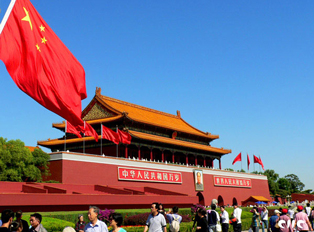
The world’s largest public square, Tiananmen Square (subway line 1, Tiananmen Xi, Tiananmen Dong or Qianmen, ..../ ..../ ..) is a vast desert of paving stones at the heart of Beijing and a poignant epitaph to China’s hapless democracy movement. It may be a grandiose, Maoist tourist trap, but there’s more than enough space to stretch your legs and the view can be breathtaking, especially on a clear day and at nightfall. Kites flit through the sky, children stamp around on the paving slabs and Chinese out-of-towners huddle together for the obligatory photo opportunity with the great helmsman’s portrait.
The square is laid out on a north–south axis. Threading through Front Gate to the south, the square’s meridian line is straddled by the Chairman Mao Memorial Hall, cuts through the Gate of Heavenly Peace to the north and cleaves through the Forbidden City behind. In the square, you stand in the symbolic centre of the Chinese universe. The rectangular arrangement flanked by halls to the east and west, to an extent echoes the layout of the Forbidden City. As such, the square employs a conventional plan that pays obeisance to traditional Chinese culture, while its ornaments and buildings are largely Soviet inspired.

Easily within striking distance of the Summer Palace is the Western Hills, another former villa-resort of the emperors. The part of the Western Hills closest to Beijing is known as Fragrant Hills Park. You can reach Fragrant Hills Park by bus 696 (from Zhongguanyuan station to Xiangshan station). It takes you about 1hour along the trip.
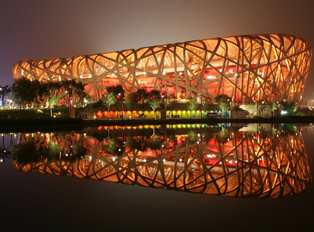
The National Stadium (subway line 8, Aotizhongxin, ....), affectionately known as Bird"s Nest, is situated in Olympic Green Village, Chaoyang District, Beijing. It was designed as the main stadium of 2008 Beijing Olympic Games. The Olympic events of track and field, football, gave lock, weight throw and discus were held there. Since October, 2008, after the Olympics ended, the National Stadium has been opened as a tourist attraction. Now, it"s the center of international or domestic sports competition and recreation activities.
The Forbidden City was the Chinese imperial palace from the Ming Dynasty to the end of the Qing Dynasty. It is located in the middle of Beijing, north to the Tiananmen Square, and now houses the Palace Museum. For almost five hundred years, it served as the home of emperors and their households, as well as the ceremonial and political center of Chinese government. Built in 1406 to 1420, the complex consists of 980 buildings with 8,707 bays of rooms and covers 720,000 m2 (7,800,000 sq ft). The palace complex exemplifies traditional Chinese palatial architecture, and has influenced cultural and architectural developments in East Asia and elsewhere. The Forbidden City was declared a World Heritage Site in 1987, and is listed by UNESCO as the largest collection of preserved ancient wooden structures in the world.

One of Beijing’s most visited sights, the immense park of the Summer Palace requires at least half a day of your time. It’s very close to Peking University, only 3 stops away by subway line 4 (Beigongmen, ...).
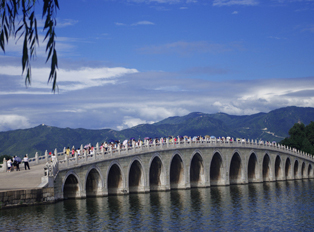
Nanluogu Xiang is an old lane renowned for its long history, Hutong culture, specialty stores, and distinctive foods. It is 768 meters (2,519 feet) long and 8 meters (26 feet) wide. Its north end joins Gulou Dong Dajie, and the south end is connected to Di"anmen Dong Dajie. There are eight parallel hutongs on each side of Nanluogu Xiang. These sixteen hutongs and Nanluogu Xiang were put on the first list of 25 historic and culturally protected areas in November 1990, by the Beijing Municipal Government. Situated in the downtown area, it is convenient to reach Nanluogu Xiang is like an old man who is telling an ancient legend about his past. Here, you can experience the special Hutong culture of Beijing. Also, meals and snacks in this old lane are something else that will appeal to its visitors. To get to Shichahai and Nanluogu Xiang, you can take subway line 4 to station Pinganli (...), through the intersection to the southeast corner, and ride on tram 118 at station PinganliLukouDong (......). Get off at Beihaibeimen (....) to reach Shichahai and Luoguxiang (...) to reach Nanluogu Xiang.
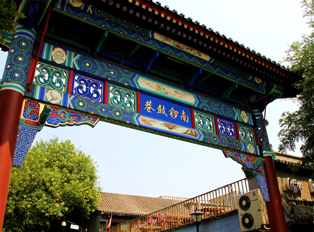

Dashilan, pronounced as "Da Shi Lar" by the local people, should be the most ancient, famous and distinctive commercial street in hutongs of Beijing. Located outside the Qianmem Gate (subway line 1, Qianmen, ..), Dashilan Street takes dozens of steps to walk from southwest of Tian"anmen Square to its east end. The prosperous classes of the ancient capital nurtured its business. Now, the old street is famous for all kinds of stores with an antique flavor. Many people come here to experience the relics of historic wealth.
Located northwest of the city centre, the original Summer Palace, northeast of the Summer Palace, was laid out in the 12th century. Resourceful Jesuits were later employed by Emperor Qianlong to fashion European-style palaces for the gardens, incorporating elaborate fountains and baroque statuary. During the Second Opium War, British and French troops destroyed the palace and sent the booty abroad. Much went up in flames, but a melancholic array of broken columns and marble chunks remain. It’s located north to Peking University, only 1 stop away by subway line 4 (Yuanmingyuan, ...).
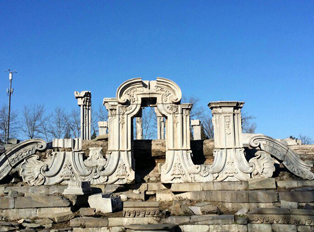
Shichahai is a famous scenic area that includes three lakes (Qian Hai, meaning Front Sea; Hou Hai, meaning Back Sea and Xi Hai, meaning Western Sea), surrounding places of historic interest and scenic beauty, and remnants of old-style Beijing residences, Hutong and Courtyard. It is located in the northwest part of Beijing, and covers a large area of 146.7 hectares.
The greatest point of interest in Shichahai today is its residences, Hutong and Courtyard. In and around Beijing City, Shichahai is one of the best places to view well-preserved Hutongs and courtyards. Visiting hutongs by pedicab has become a popular activity for visitors from China and abroad. The most famous Hutong is Jin Si Tao, which actually includes 18 hutongs and keeps the original layout of Hutong Area. Another one is Yandai Xiejie, meaning an oblique street which looks like a long-stemmed pipe. This street used to be a famous street selling long-stemmed pipes. In the east of Shichahai area, Nanluogu Xiang is an interesting hutong renowned for its long history, Hutong culture, specialty stores and distinctive foods.

Contact:
Mailing Address:
Mrs.Meng Yu
No.78 Jingchunyuan,Peking University,
Beijing,China 100871
E-mail:yumeng@bicmr.pku.edu.cn

